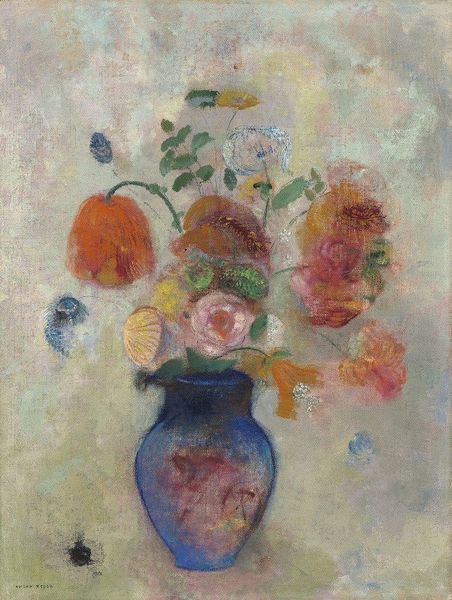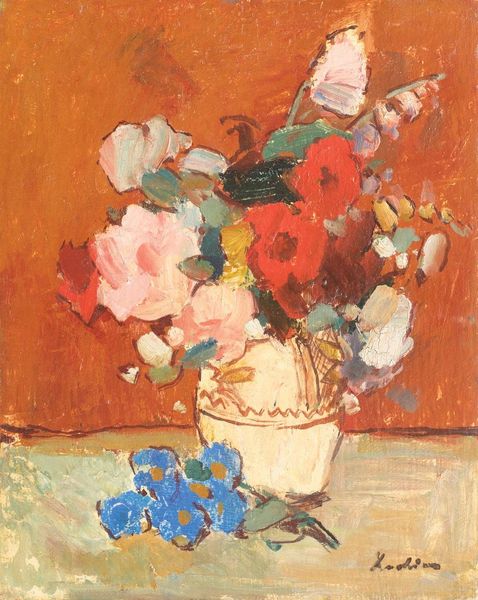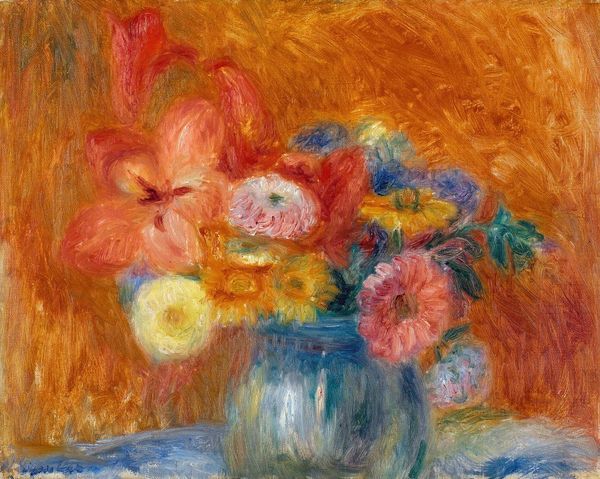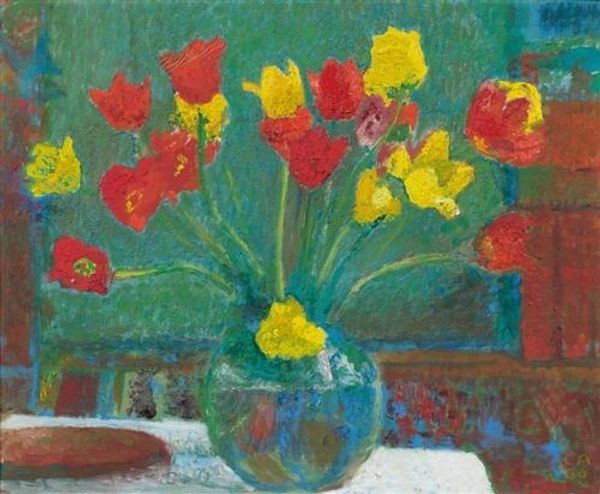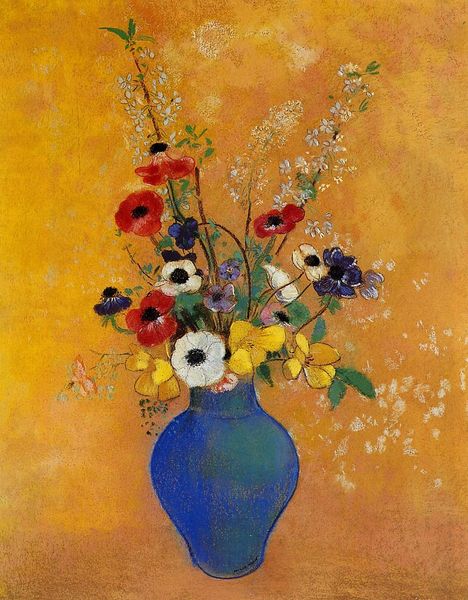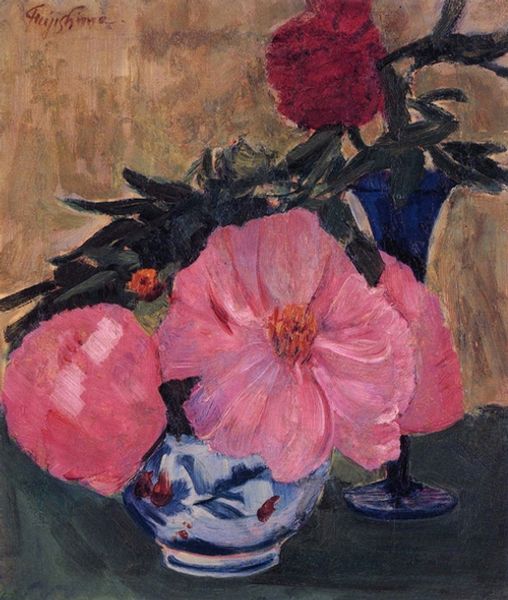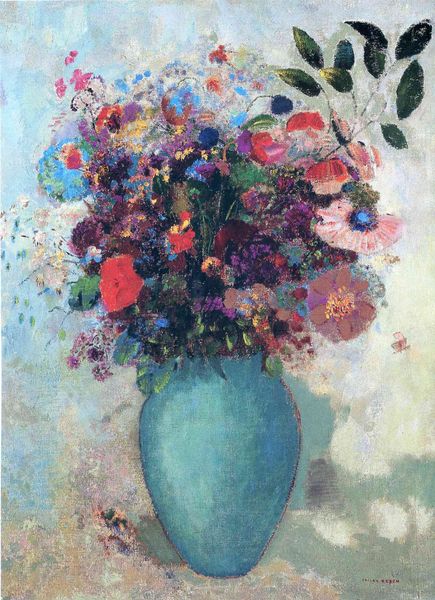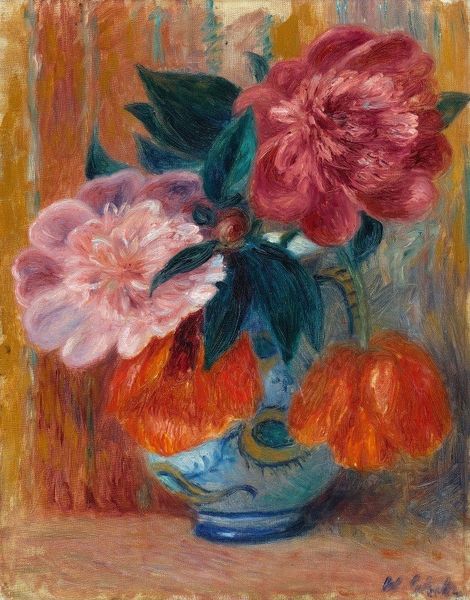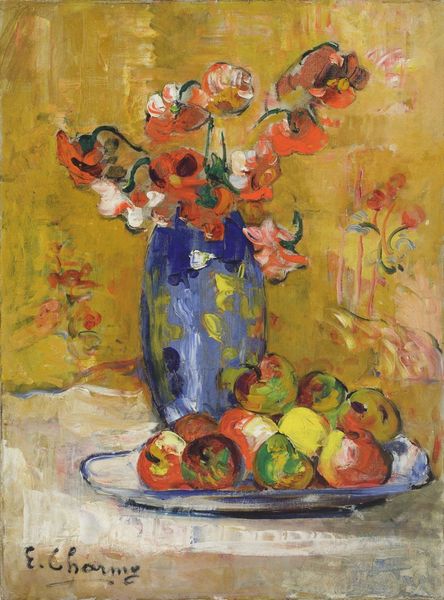
Copyright: Public Domain: Artvee
Editor: So, we're looking at "Red Apples" by Helene Schjerfbeck, painted in 1915. It looks like watercolor, maybe with some impasto. It’s a very intimate still life – almost domestic, but there's something slightly unsettling about it. What do you make of it? Curator: I see this work as a powerful statement of Schjerfbeck's time. The choice of apples, a common and seemingly simple subject, belies the deeper socio-political context. During World War I, Finland was caught between Russia and Germany. Everyday life was affected by uncertainties, which are mirrored in the use of impasto watercolors to depict such seemingly joyful colours in this domestic sphere. Don't you think she creates this anxiety and quiet strength by rendering apples like that? Editor: That's interesting! I hadn't thought about the war impacting even still life paintings. I was so focused on the form; the way the edges of the apples and the background sort of dissolve into each other. I can definitely see that the style is used to represent domestic anxieties through distortion. What choices of the museums allowed this image to exist until today? Curator: Exactly! The institutional support, the galleries championing female artists and their individual takes during a time of unrest. If the Finnish state or prominent private collectors did not protect Schjerfbeck's artistic visions, this unique picture may not have made its way into the broader consciousness. What a loss it would have been! Editor: I’m struck by how understanding the historical context makes the painting so much more powerful. Now it feels like more than just "red apples"! Curator: Yes, understanding the social history provides new access for diverse interpretations for an otherwise understated subject matter. Thank you for bringing attention to such nuances.
Comments
No comments
Be the first to comment and join the conversation on the ultimate creative platform.
